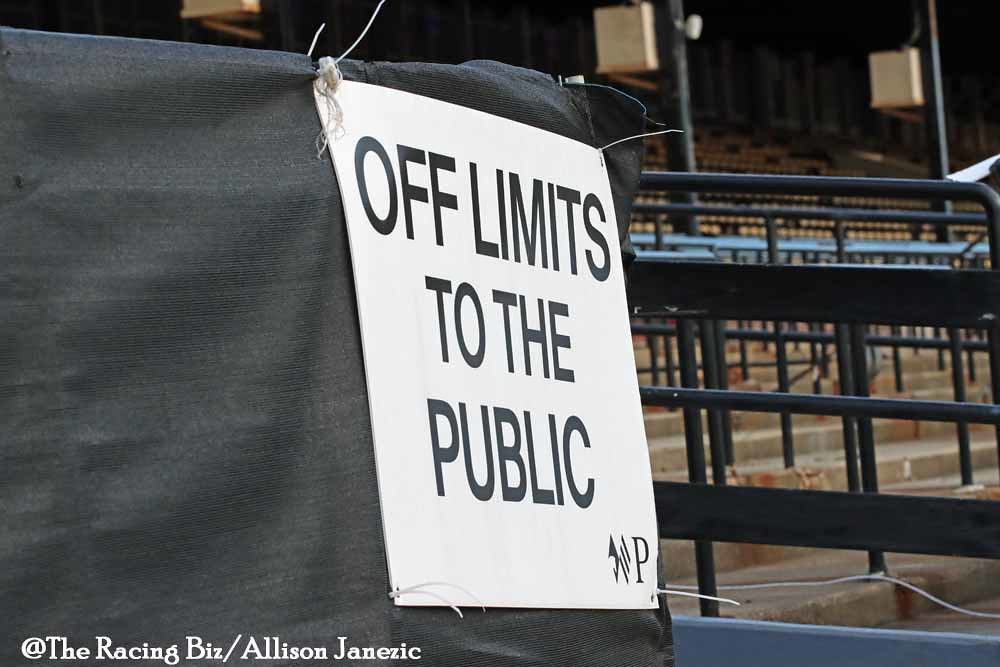PIMLICO-LAUREL REDO PROJECT KICKING TO LIFE

One of these years, Maryland racing will awaken Christmas morn’ to something remarkable under the tree: a shiny new Pimlico Race Course to replace the rundown hulk that’s the home of the Preakness.
But it’s gonna take a while.
That’s the upshot of an early December conversation with Maryland Stadium Authority Executive Vice President Gary McGuigan. McGuigan is overseeing the massive project to remake Pimlico as a modern racing venue and an economic engine for the surrounding neighborhoods while also renovating Laurel Park.
The ultimate outcome of the project: “Two high-end facilities that are pretty similar but very diverse, too,” McGuigan said.
In several years.
The MSA is empowered to issue up to $375 million in bonds to finance the project. The project is a result of state legislation passed in the waning hours of the 2020 legislative session. That bill, the Racing and Community Development Act of 2020, is a complex bit of legislation that provides both the funding and the 30-year repayment scheme for the facilities.
It also salvaged a challenging situation. In 2019 the efforts of the Stronach Group, which owns the facilities, to obtain legislation which would have turned Laurel into a so-called “super-track” while leaving Pimlico behind blew up, leading to lawsuits and recriminations.
Without the agreements that became the Racing and Community Development Act, Baltimore stood to lose the Preakness as an economic engine – and the slot machine revenue that subsidizes racing and breeding in the state could also have been imperiled.
- Colonial Downs: Latest jockey and trainer stats
 Which Colonial Downs jockeys and trainers are having a good meet? Who’s doing better than you’d think? Or heating up now? Answers within.
Which Colonial Downs jockeys and trainers are having a good meet? Who’s doing better than you’d think? Or heating up now? Answers within.
That complexity – necessary to reach a deal – is part of what will take time, McGuigan said.
“We cannot issue bonds until all the agreements are executed between the parties,” he explained. The MSA itself is a party to three agreements of the roughly 10 to 15 total that must be reached.
Those agreements are required to convey title to certain properties – some of the Pimlico land ends up in the city’s hands for economic development purposes, for example – and to lock in management, access, and other provisions.
But beyond that, it’s simply a complex project, one that McGuigan called “unique for us.” While the Stronach Group will remain in charge at Laurel – where year-round racing is expected to occur – the MSA itself will operate a Pimlico facility that’s expected to handle gargantuan crowds and top-class racing for a couple of weeks a year and to be something else altogether the rest of the calendar.
The MSA is in the process of reviewing proposals for architecture and engineering services to be part of what McGuigan called “a very comprehensive team.”
It’s an in-depth procurement, McGuigan said, because the project is both complicated and unusual. So while it will take a while to reach a finished product, decisions made today will be critical in the long run.
“It’s really going out and making good choices on the experts to hire the expertise that we need,” he said.
McGuigan said the MSA expected to choose the architectural/engineering team in the first quarter of 2021. From there, he said, he and his team expect it will take about two years to plan and design the facilities. Once that’s done, it’s another year or more per facility, with one major challenge being that racing must continue – and the Preakness be run – even while one facility is undergoing renovation.
- Argyle and Thoroughbred racing in the 1830s
 Connected to Supreme Court justices and governors, the Maryland-bred Argyle became one of the best horses of the 1830s. His story.
Connected to Supreme Court justices and governors, the Maryland-bred Argyle became one of the best horses of the 1830s. His story.
To facilitate that process, the MSA has created a committee of stakeholders. The Maryland Racing Steering Committee includes the MSA, Maryland Racing Commission, Maryland Thoroughbred Horsemen’s Association, Anne Arundel County (where Laurel is located), the City of Baltimore, and the Stronach Group.
While advocates of the project in the initial stages presented it as a complete package, McGuigan said very little is actually written in stone.
Just about the only element that’s virtually certain: that the Old Hilltop oval will be shortened and rotated approximately 30 degrees.
Those changes are what make the project something beyond “more of the same” for the City.
“One of the key aspects with Pimlico was to get development on Northern Parkway,” McGuigan said. Development which is abetted by having lots that are more rectangular, rather than the irregular parcels currently part of the property.
Beyond that, though, much remains to be ironed out.
Which facility will be redeveloped first? “Still up in the air,” he said.
How big will the Pimlico grandstand be? “To be determined,” he said, adding that the goal there was “giving every level of spectator the best experience of the Preakness.”
And at Laurel? “The biggest question with Laurel is the clubhouse and is there any useful life left in that?”
The Stadium Authority gained an outstanding reputation for its work in the construction of baseball’s Oriole Park and M & T Bank Stadium, the home of the NFL Ravens. Since, it’s added many other types of venues to its portfolio: smaller athletic facilities, schools, theaters and many others.
The Pimlico/Laurel redevelopment project adds additional layers of complexity – including multiple stakeholders with varying agendas, and multiple facilities with varying uses – and tops all that off by taking place amid a pandemic.
The Covid-19 pandemic has not affected the project “so far,” according to McGuigan, but with the nation entering a stage that some experts fear will be the toughest yet, that could change.
But one way or another, the redevelopment of Pimlico and Laurel – the former, in particular, a project that always seemed to be off beyond the horizon – is at long last moving forward.
LATEST NEWS
















******The Old Hilltop oval will be shortened and rotated approximately 30 degrees******
– Ridiculous – Very Expensive. —- The Pimlico Track Is part of RACING HISTORY.
Laurel or Pimlico —- Big Crowd For PREAKNESS DAY AND BLACK EYED SUSAN DAY ONLY.